| Botanical Name |
|
| Family |
Crassulaceae - The crassula family. |
| Pronunciation |
KRASS-oo-la ro-JERZ-ee-eye |
| Common Name(s) |
|
| Plant Group |
- Succulent A plant having fleshy stems or leaves often adapted to dry conditions.
|
| Plant Size |
- Small
| Tree | 4m to 8m |
| Shrub | 50cm to 75cm |
| Perennial/ground cover | 10cm to 20cm |
| Bulb | 20cm to 30cm |
| Succulent | 10cm to 20cm |
|
| Position |
- Partial Shade The area is in shade for part of the day and in full sun for part of the day.
- Sun The area is in full sun for all or most of the day, all year round.
|
| General Information |
- Drought Tolerance: High The plant is well adapted to arid conditions; it can survive long periods of drought and high temperatures without extra water.
- Evergreen Plants that have leaves all year round.
- Frost: Half-hardy The plant is able to survive low temperatures and some frost but requires protection against severe frost.
- Water Wise Plant species originating from low rainfall regions that require less water to survive and thrive than other plant species.
|
| Specific Information |
Crassula rogersii is a small, branched succulent bush with fleshy red stems and club-shaped leaves. The leaves are covered with short white hairs giving them a velvety appearance and a felt-like texture. The plant remains green in shady spots but is at its best with plenty of sunlight, where the leaves become tipped with red. This plant develops into a small, dense cushion but does not seem to spread, making it particularly useful for pot cultivation or nooks in a rockery.
|
| Ad Break |
|
| Flowers |
| Description |
tiny star-shaped flowers held in small clusters at the end of thin stems
|
| Season |
- Spring to Summer Plants will seldom bloom for the entire season as given in the list, but should flower during a period within these parameters.
|
| Colour |
|
| Growth Rate |
- Moderate Specifying growth rate can be very misleading as there is considerable variation of growth rate depending on type and species of plant, available water, supplementary feeding, mulching and general care, as well as the plants suitability and adaptability to the garden environment.
|
| Plant Uses |
- Border A strip of ground, at the edge of a driveway or path in which ornamental plants or shrubs are planted.
- Container Trees, shrubs and ornamental species that can adapt to growing in a restricted environment.
- Edging A low growing plant that provides softness or definition to the edges of a bed or walkway.
- Filler Either a fast growing tree or shrub used temporarily to fill in an area while the permanent plants grow to a desired size, or a plant used to fill gaps in borders or beds.
- Pot Plant A plant that needs a protected environment on a patio or indoors.
- Rock Garden An area constructed of larger rocks, arranged naturally, to emphasise the use of stones as a main element. Generally plants used do not need a lot of care.
- Stabilize Banks Plant is used to prevent soil erosion because their roots will form a mat that stabilizes the soil and keeps it from washing away in heavy rains.
- Suitable for coastal gardens Plants adapted to dry, sandy soil, forceful wind, limited rainfall and intense sunlight.
- Wild Garden An indigenous garden planted for the benefit of wildlife and birds. Provides food, water, a variety of mini-biomes and no poisonous chemicals are used.
|
| Distribution and Habitat |
in the Eastern Cape Province from Willowmore to Port Elizabeth and Port Alfred, in Albany thicket and Succulent Karoo, among rocks and dry scrub
|
| Planting Suggestions |
Plant Crassula rogersii in any well drained soil, which need not be nutrient rich as this will spoil the tight, bunching nature of this succulent. Water only when the soil is dry. Over-watering will cause fungal infections or rotting. Keep dry during winter, watering only enough to keep the plant from shriveling. I have observed this plant growing in full sun in very stony shale with only a little soil. It also grows in the light protection of scrubby shrubs but these specimens tended to be rather more lanky and untidy. Easily propagated from stems placed in a sandy mixture or directly into the ground. Keep slightly moist until rooting has taken place.
|
| Medicinal Uses |
|
| Ad Break |
|


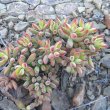
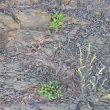

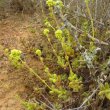
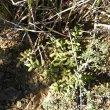
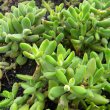


Discuss this plant
Share knowledge, ask a question or give an experience.